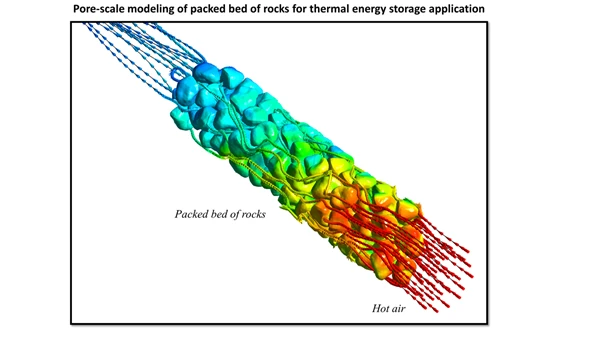Dear MEP core members, TUM researchers and students,
you are cordially invited to attend the next lecture in the series “New Horizons in Materials, Energy, and Process Engineering” of the Munich Institute of Integrated Materials, Energy and Process Engineering (MEP):
“Modeling Heat and Fluid Flow in Rock TES Systems”
by Leyla Amiri, Université de Sherbrooke, Quebec, Canada
Abstract:
Thermal energy storage (TES) based on natural rock materials offers a low-cost and robust pathway for large-scale heat buffering in renewable and industrial applications. The predictive modeling of such systems remains difficult because heat transfer occurs in porous domains with highly irregular geometries where conduction, forced and natural convection, and surface-to-surface radiation interact across multiple length and time scales. This presentation summarizes recent advances in numerical methods, pore-scale analyses, and coupled system modeling that aim to improve the design and reliability of Rock TES.
A three-dimensional conjugate model is presented that resolves transient heat and fluid transport inside large rock domains serving as natural TES units. The model is validated with field measurements from a natural heat-exchanger system installed in a deep underground mine in Canada. Wind-tunnel experiments using packed spheres complement the numerical results and provide pressure-drop and friction-factor data for comparison with pore-scale CFD and analytical correlations. This methodology improves the physical representation of airflow in packed and fractured rock masses and supports the integration of validated porous-resistance models into large-scale simulations. As an example of practical application, the framework can be directly used to evaluate airflow resistance and leakage pathways in fractured rock environments for gob areas (broken rocks) in longwall mines.
The talk then examines high-temperature TES through particle-resolved CFD simulations of structured packed beds. The results show that radiative transport becomes dominant for large, high-emissivity particles and increases with porosity because of enhanced view factors.
Across all scales, the work highlights the importance of selecting characteristic length scales that are physically meaningful for porous media and of refining dimensionless groups such as Reynolds and Nusselt to better capture flow and heat transfer in complex rock structures. These developments support improved scaling laws and more accurate closure models for both pore-scale CFD and system-scale TES design.
Date: Thursday, 04.12.2025
Time: 16:00 - 17:00
Location: ZEI Building, Lecture Hall 001 (5414.EG.001), Lichtenbergstraße 4 a, 85748 Garching b. München
Save the date - we look forward to your participation.
Feel free to forward this invitation to any TUM member that is interested in the topic.

